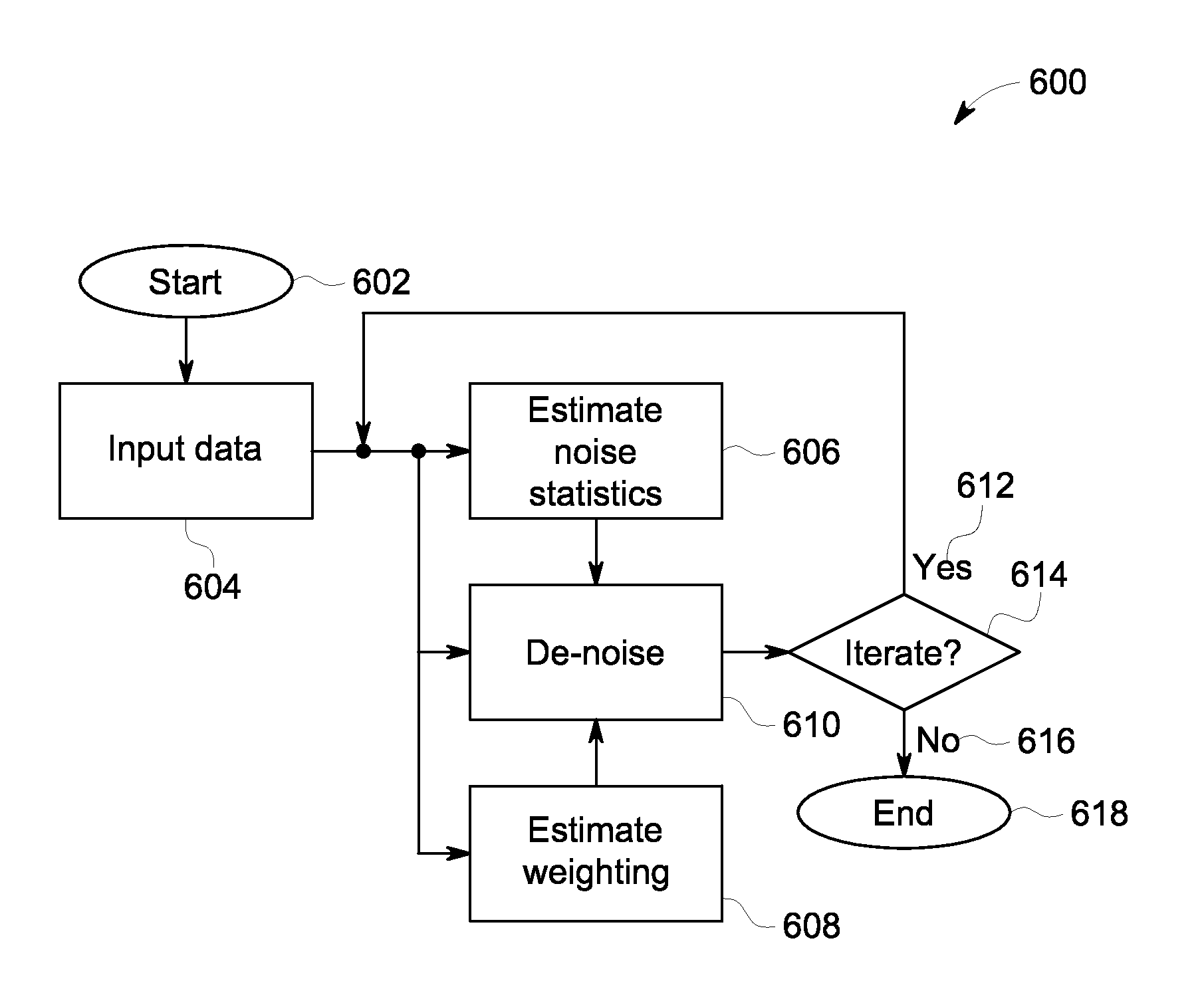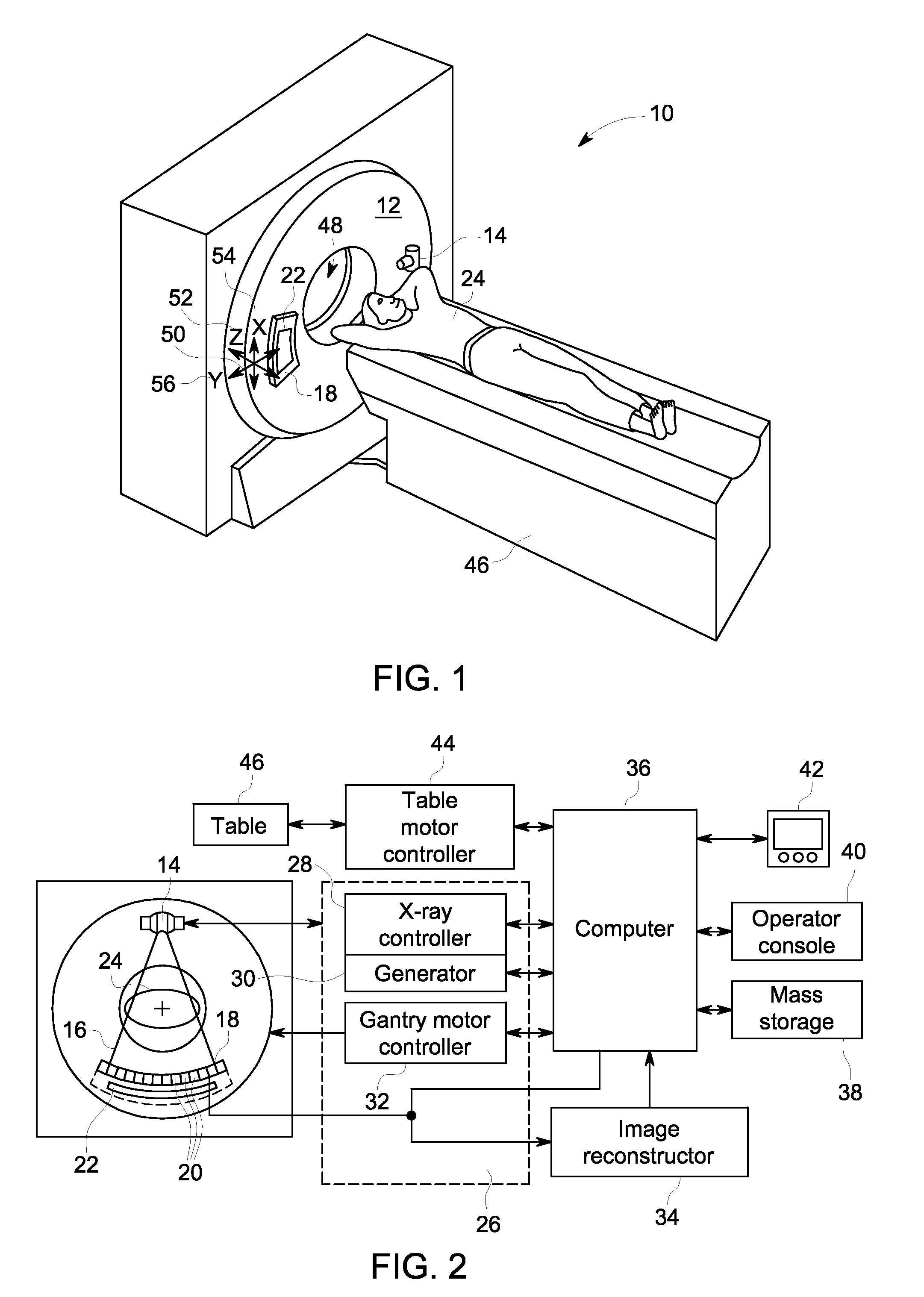System and method of computed tomography signal restoration via noise reduction
- Summary
- Abstract
- Description
- Claims
- Application Information
AI Technical Summary
Benefits of technology
Problems solved by technology
Method used
Image
Examples
Embodiment Construction
[0021]The operating environment of disclosed embodiments is described with respect to a sixty-four-slice computed tomography (CT) system. However, it will be appreciated by those skilled in the art that disclosed embodiments are equally applicable for use with other multi-slice configurations, or other imaging systems in general, such as an x-ray system on a c-arm or a micro-CT system, as examples. Moreover, disclosed embodiments will be described with respect to the detection and conversion of x-rays. However, one skilled in the art will further appreciate that embodiments are equally applicable for the detection and conversion of other high frequency electromagnetic energy. Disclosed embodiments will be described with respect to a “third generation” CT scanner, but is equally applicable with other CT systems as well as vascular and surgical C-arm systems and other x-ray tomography systems.
[0022]Referring to FIGS. 1 and 2, a computed tomography (CT) imaging system 10 is shown as in...
PUM
 Login to View More
Login to View More Abstract
Description
Claims
Application Information
 Login to View More
Login to View More - R&D
- Intellectual Property
- Life Sciences
- Materials
- Tech Scout
- Unparalleled Data Quality
- Higher Quality Content
- 60% Fewer Hallucinations
Browse by: Latest US Patents, China's latest patents, Technical Efficacy Thesaurus, Application Domain, Technology Topic, Popular Technical Reports.
© 2025 PatSnap. All rights reserved.Legal|Privacy policy|Modern Slavery Act Transparency Statement|Sitemap|About US| Contact US: help@patsnap.com



